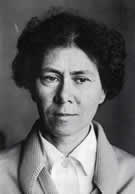History of biospeleology in Croatia
The first information regarding cave organisms in Croatia dates from the first half of 19th century. For that period, the typical methods were sampling and giving a short description of sample material. Numerous findings are marked by the name of region only, for example, "Dalmatia" - which makes it difficult today to judge whether they are members of Croatian fauna, because of changes in administrative regionalization and of frontiers. The troglomorphic snail Lanzaia elephantota (Muhlfeldt) (syn. Turbo elephantota Muhlfeldt) was described in 1824 as a marine organism of the Dalmatian coast. More than 100 years later it was discovered to be a member of the subterranean fauna. The troglophilic cave cricket Dolichopoda araneiformis (Burmeister) (syn. Phalangopsis araneiformis Burmeister) was described in 1838, most probably, from a cave in the environs of Dubrovnik. The olm Proteus anguinus Laurenti was found in Dalmacija by F. Carrara from Split in 1840 (the source of Goručica River by Sinj). On the basis of this finding, plus a sample from an unnamed cave in the Neretva area, Fitzinger (1850) described the species Hypochton carrarae Fitzinger, which was later not recognised as being a separate species of Proteus.
During the second half of 19th century faunistic surveys led by numerous researchers began in Croatia. From material collected in Dalmacija by J. Erber from Vienna, new species of cave beetles and spiders were described. In caves of Lika in 1862, the Slovene N. Hoffman defined the first accurate finding of troglomorphic beetles for Croatia. S. Brusina collected material in caves of Kordun and Lika, and noted the first sample of troglobiont snail in caves, and the first cavernicolous millipedes. In the Lika region, on July 7th, 1879 the olm was found, for which Brusina (1880) defined a new taxonomic category, Proteus croaticus nom. nud.
The first systematic biospeleological study was performed by A. E. Jurinac who collected, in the period from 15th till 31st August, 1883 items of fauna in five caves in the Kordun region. The results are published in "Prilog hrvatskoj fauni ogulinsko-slunjske okolice i pećina". Among other findings, a new species of stygobiotic amphipod Niphargus croaticus (Jurinac) (syn. Eriopis croatica Jurinac) is described. This survey earned him a Ph.D. in Jena.
In the first half of the 20th century biospeleologic research became much more vigorous and thorough. In the period from 1902 to 1913, A. Langhoffer led surveys on the grandest scale to date. Rich animal material was collected from caves in Kordun, Gorski kotar, Lika and Zagreb and the surrounding regions. A review of cavernicolous taxa known up to that time and defined by numerous Croatian and foreign researchers was published in two parts under title "Fauna cavernarum Croatiae". From 1912 to 1914 similar research was performed in Dalmacija by U. Girometta. A list of fauna collected in more than 50 caves in Central Dalmacija was published in two works, the latter, entitled "Fauna cavernarum Dalmatiae" being more detailed. A major contribution to knowledge about Croatian subterranean fauna was made by Czech biospeleologist K. Absolon who surveyed the Dinarides. In his collection named "Biospeologica Balcanica", the most significant part was obtained in Croatia. G. Müller collected cave beetles in the Hrvatsko primorje region from Istra to Dalmacija up to World War II. He described numerous new taxa of beetles and pseudoscorpions, as well as of crustaceans. The most vigorous biospeleologic research was carried out in Dalmacija, where subterranean fauna was collected by numerous coleopterologists, while specialists for other groups are less numerous.
In the second half of the 20th century specialist biospeleological research was conducted. After World War II, cave Coleoptera were surveyed by E. Pretner from Postojna, but he also collected other cave material such as millipedes, pseudoscorpions, etc. Coleoptera were collected by V. Redenšek from Zagreb, while spiders were surveyed by F. Nikolić from Dubrovnik. In the period from 1962 to 1967, and later, supported by SAZU (the Slovene Academy of Sciences and Arts) the Dinarides was surveyed systematically by Slovene bispeleologists, J. Bole, B. Drovenik, J. Matjašič, A. Polenec, E. Pretner, B. Sket, K. Tarman, F. Velkovrh, etc. From 1961 to 1988 C. Deeleman-Rheinhold from the Netherlands did research into the spiders of the Dinarides. She surveyed about 400 caves in nearly 30 years of research. Beside description of numerous new taxa of cave spiders she described taxa from several other groups (e. g. isopods). Arachnology research was also carried out by J. Kratochvil and F. Miller until 1977.
Since the late 1960s, cave fauna in the whole of Croatia has been collected by the coleopterologist B. Jalžić. Among his numerous works on the taxonomy and distribution of coleopterans he has contributed to the research into stygobiotic fauna. Since the end of the 70s, mostly in Dalmacija, cavernicolous fauna has been collected by the malacologist T. Rađa. From work on material obtained from these two researchers, numerous new taxa of pseudoscorpions, millipedes, crustaceans and other groups have been described. Cavernicolous snail fauna has been surveyed by H. Schütt and the Slovene malacologists J. Bole, F. Velkovrh, recently by R. Slapnik and the Croatian malacologist V. Štamol. The spiders of Dalmacija have been investigated by M. Brignoli, and those in the Gorski kotar region by F. Gasparo. Crustacean fauna has been investigated by G. Karaman, B. Sket and F. Stoch, and recently by S. Gottstein Matočec. B. Sket has started research into anchihaline caves. Millipede fauna was surveyed by N. Mršić, and the olm by B. Sket, T. Rađa, B. Jalžić and E. Kletečki. Bat fauna has been surveyed by B. Đulić, N. Tvrtković, D. Kovačić and D. Hamidović. In 1996 the Croatian Biospeleological Society was founded; this unites biospeleologists of Croatia.
Recently, numerous young researchers have been studying and collecting subterranean fauna in Croatia. J. Bedek work on Isopods, M. Lukić on Collembola, M. Pavlek on Aranea, H. Bilandžija on ogulin cave sponge and cave clam, T. Dražina on Diplopoda and A. Komerički on Chilopoda. *
* This text is brief history of biospelology in Croatia. For more details look at the bibliography.
Bibliography: Gottstein Matočec, S. (ed.), 2002: An overview of the cave and interstitial biota of Croatia. Natura Croatica, Vol. 11, Suppl. 1, p. 1-112.






